You see your friends with their sheets ready to play, but yours remains blank.
Time passes, decisions are huge. You are indecisive and don't know how to answer one of the most difficult questions when starting a new campaign:
“Which class do I play with?!”
Deciding your character's class is an important step in knowing what to do at the D&D tables.
But it doesn't have to be that difficult.
Read on and discover the classes available in the fifth edition of Dungeons & Dragons: Their origins, inspirations, play styles and other tips, so you'll never be in doubt about what to choose again!
Classes in D&D 5e
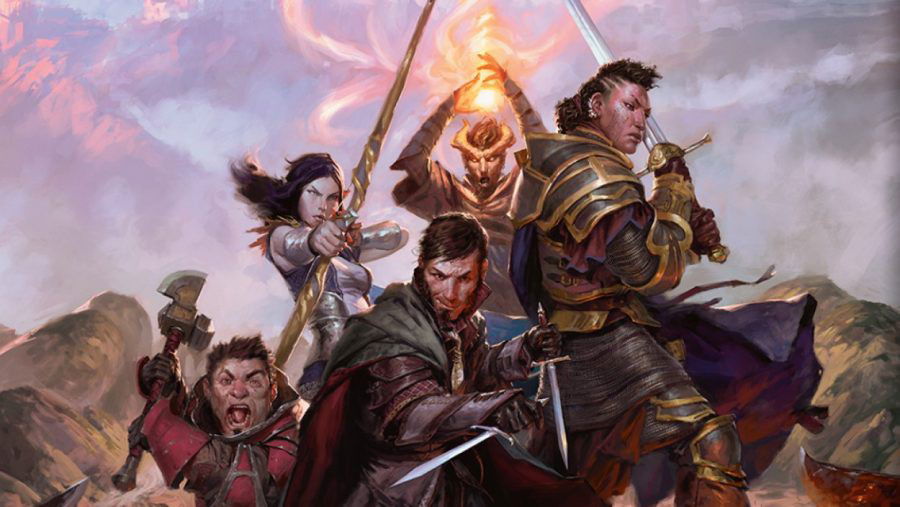
What is a class in Dungeons & Dragons?
Classes are archetypes. That is, the combination of characteristics, skills and equipment that define what your character is capable of doing.
While other sheet options are static, classes evolve. As a character gains experience, they become stronger in the class they use, gaining new powers. In this way, even two characters with the same class can follow different paths as they evolve.
Classes also serve to guide players. If you want spells, you can choose a Wizard or Cleric, while someone who wants melee combat can be a Warrior or Monk without having to create something from scratch like in other systems.
How many classes are there in D&D 5e?
So far, the basic manual has 12 classes and a 13th has been released in more recent manuals, the Artificer.
Each class features a character and playstyle .
So even two combative classes like Warrior and Barbarian that seem to have the same base, in game are quite different from each other — and as they evolve they gain access to special paths that make you even more differentiated even among others of the same class.
That is, a group with two mages is perfectly possible, one focused on illusions and the other on necromancy. They are still in the same class, but with entirely different focuses.
Below you'll find a complete guide to the origins and inspirations of each of these 13 core classes, so get ready and let's go!
Artificer
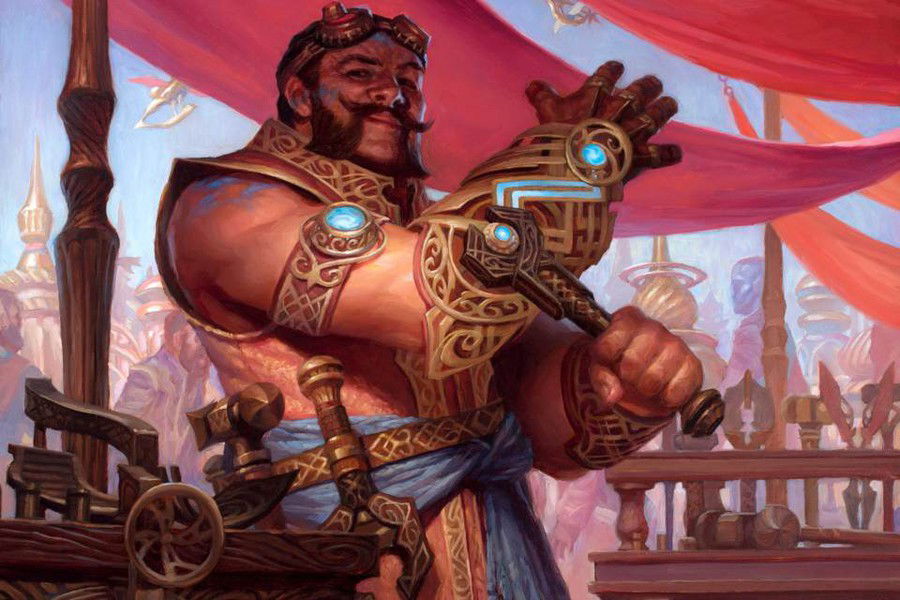
Blending experimental technologies with magic, Artificers are inventors, alchemists, and metallurgists with knowledge beyond current science.
While warriors and barbarians kill each other with pieces of iron, you use firearms, grenades and mechanical minions when intelligence isn't enough.
Artificers in History
Artificer is a portmanteau of Alchemist and Genius inventor.
Alchemists were scholars who united the science of the time with philosophy and mysticism. It was they who gave rise to current Chemistry and legends such as the Philosopher's Stone and the transmutation of metals.
Inventive geniuses, in turn, are the fathers of several relevant technological advances, such as Leonardo DaVinci, Nicholas Tesla and Santos Dumont. They still impress today with their thoughts ahead of the time they lived.
Artificers in Fantasy
In Harry Potter alchemy is a Hogwarts school subject and in electronic RPGs it is often used to prepare potions and other items with materials found in the world, as in the Elder Scrolls and Atelier series.
On the Inventions side we have the student body of inventors in Boku no Hero Academia and, in the comics, characters like Reed Richards and Lex Luthor, two geniuses focused on creations of all kinds.
Artificers in D&D
Play Artificer if you want skill lists and cards up your sleeve like magic, potions, special equipment, mechanical allies, and firearms.
It will be a fragile target for direct combat, but with strategies for all kinds of situations.
As they evolve, artificers may decide to specialize in paths such as alchemy and artillery.
Barbarian
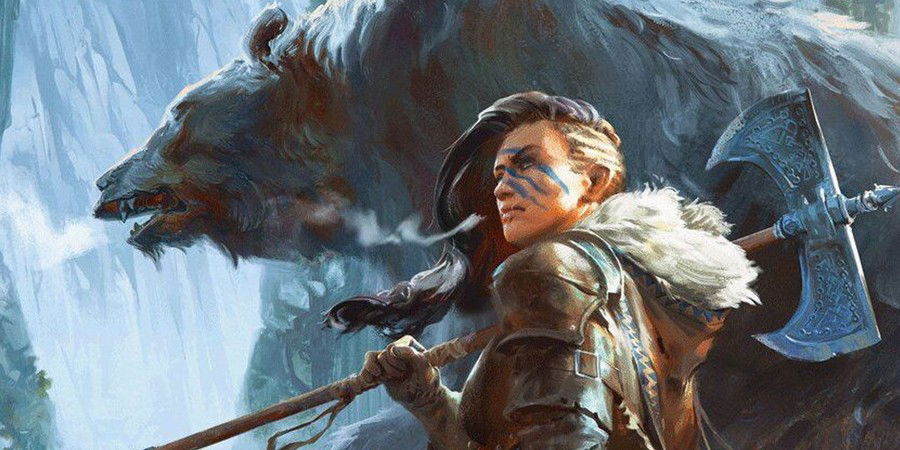
Great warriors from distant realms with cultures and talents of their own.
They mix the brutality of life in nature, profound knowledge of ancestral spirits and a state of Rage that increases their powers, creating a feared and respected figure wherever they go.
Barbarians in History
Barbarians have a controversial origin. The term is considered offensive historically, as it served as an inferiority and generalization of any people other than those considered “civilized”. A prejudiced thought, but widely accepted at the time.
Thus, civilizations rich in distinct cultures were included in this group. From Vikings to African peoples, all considered “backward” and of lesser relevance. Today, with the awareness of the cultural importance of these peoples, the term is avoided in scientific and historical articles, although in Dungeons & Dragons this dark side of the term is converted into a much more respectable version of the reality.
Barbarians in Fantasy
The greatest example of Barbarian is precisely “Conan the Barbarian” by Robert E. Howard. A figure of visible power, courage and heightened senses who use cunning and strength to get what he wants. “Red Sonja”, a female character from the same universe, is an interesting counterpart to the class.
In other media we have figures like Kratos from the God of War series, Tryndamere and Olaf from the League of Legends universe and as enemies in many medieval fantasy games.
Barbarians in D&D
Barbarians can deal and mostly take a lot of damage even without armor. As well as moving quickly and sensing danger with your instincts. His combat style is raw, especially in Rage.
In this state, the barbarian gains extra stats while attacking, but gets tired when finished. Depending on the specialization he chooses, he will gain extra effects such as summoning lightning bolts or acquiring traits from their animal spirits when enraged.
A barbarian can follow paths like the Berserker or totemic warrior as they evolve.
Bard
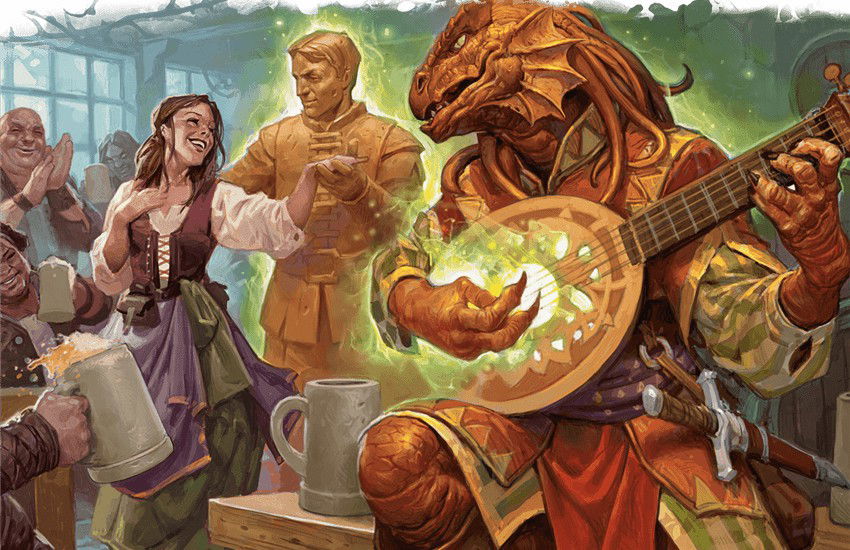
Artists knowledgeable in the histories of the world, Bards can perform magic from their works, whether with music, painting, or even a brief speech. Bards are experts in manipulating not only magic, but also touching the target's hearts in a variety of ways through their techniques.
Bards in History
Bards were poets, storytellers and talented artists usually hired by nobles to entertain them and, of course, build works of art in their favor.
As artists, bards were knowledgeable in many local legends and folklore, as well as experts in painting, music and oratory, becoming well-known figures, a fundamental part of festive events and, of course, very wise.
Bards in Fantasy
Tom Bombadil from the Lord of the Rings universe was able to create magic through music, and Jaskier from the The Witcher* series presents all the “classic” part of an always musical and artistic bard.
It is common to find bards as non-player and secondary characters in medieval fantasy media such as Fantasy Age, Elder Scrolls or even Shovel Knight.
Bards in D&D
Bards are multi-talented characters, capable of knowing and doing a bit of everything, with a special focus on manipulation with magic or skills.
If you're looking for a character capable of influencing, deceiving, and enchanting his targets while controlling combat with their songs and incantations, the bard is for you.
As they evolve, the Bard can enter Schools such as Knowledge, Creation or even Swords, mixing their art with combat techniques!
Warlock
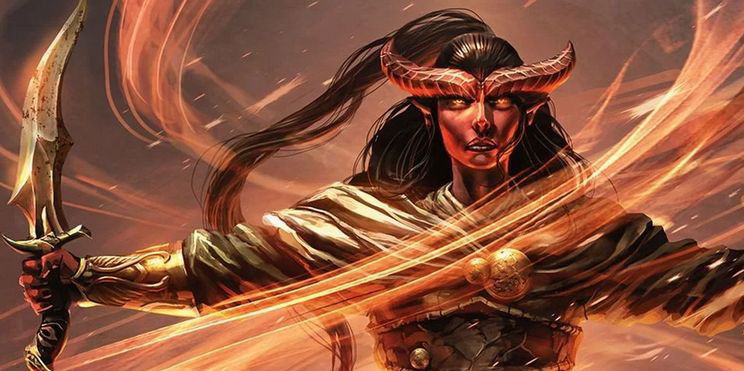
Ancestral entities await at the edge of mortal understanding to those brave enough to acquire power, and by pact, you were one of them.
Warlocks become arcane spellcasters from pacts which give them beyond spells unique and useful capabilities both offensively and for support.
Warlocks in History
Pacts with magical entities are a recurring theme in many cultures. Regardless of the veracity of these facts, most religions have, in one way or another, passages related to such themes.
Usually, the concept of a "pact" is related to demons, evil spirits, and other negative archetypes, which doesn't necessarily occur in Dungeons & Dragons, although it is possible.
Warlocks in Fantasy
Characters who gain power from pacts are common figures in pop culture and historical fantasy in general.
From Faust from German legends to villains in swashbuckling novels to the magical girls in the anime “Mahou Shoujo Madoka Magica”, they all have a connection to great power through contracts.
Warlocks in D&D
Wizards have their own list of unique magical abilities and even extra effects according to their pacts, allowing for very different builds, but which require analysis and care to be efficient.
They can focus on damage with ranged beams, magic weapons, control spells or even the use of multiclass, being one of the best for this.
As they evolve, the warlock deepens their connection to the patrons that give them power like Geniuses, Celestials and even undead.
Cleric
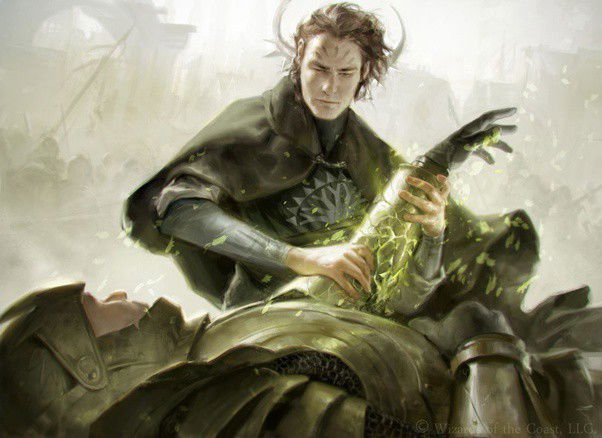
Servants of the Gods and other Divine entities, Clerics are capable of performing true miracles wherever they go.
Depending on the scenario used, they can take the most varied forms, as their powers and motivations are linked to the cosmogony of each universe, ranging from servants of good or downright evil gods.
Clerics in History
Clerics are religious figures that still exist in various religions today. But none really met all the Cleric criteria in Dungeons & Dragons.
We can say that this class was a mechanical necessity of early editions in an age of deadlier games than today. Of course, this doesn't make the Cleric any less interesting, as being a D&D origin, he connects directly with scenarios and rules of the work!
Clerics in Fantasy
The first clerics created in what would become Dungeons & Dragons were made with Van Hellsing in mind from the Book Bram Stocker's Dracula, but even though their origins were, the connection of the themes was lost over time.
Today, more directly we have the White Mages from the Final Fantasy series as a caster of healing, protection and damage spells against undead and the Priestess from the game Shining Soul II with similiar support abilities.
We also have many clerics as playable classes in RPGs based on D&D itself, especially in online games like World of Warcraft, Guild Wars or the nostalgic Ragnarok.
D&D Clerics
Clerics in Dungeons & Dragons are linked directly with a divine entity of enormous power, following its tenets and obtaining magic and special powers from its domains.
Choose Cleric if you want to help your team, face creatures that are against your beliefs and follow the tenets and traditions of your religion, whatever it may be.
As it evolves, Clerics increase their uses of powers and miracles according to the type of entity they believe in and follow.
Druid
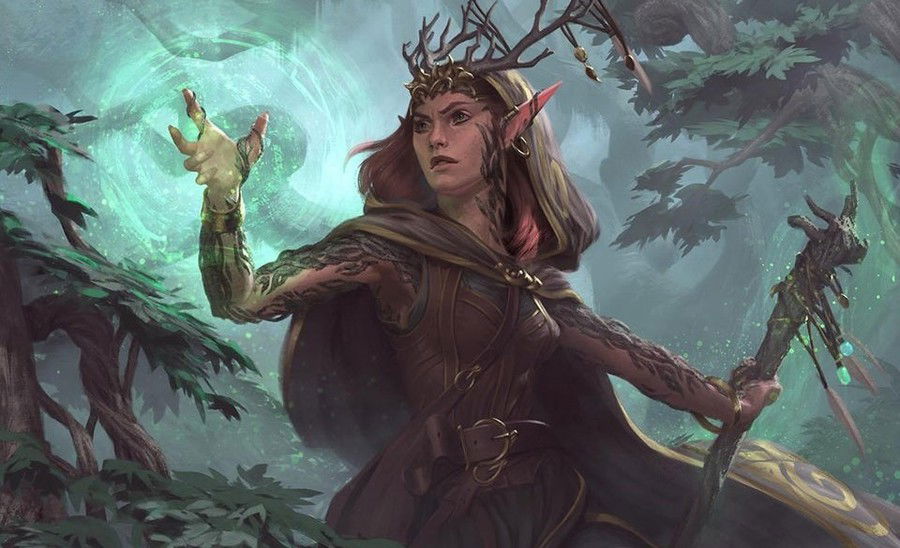
Wise and powerful, druids are divine conjurers connected directly with nature, able to control it or become part of it like animals, monsters and various plants.
Druids mix the versatility of those who control nature, but also the penalties of those who do not accept the evolution brought by society that affects and often destroys the origin of their powers.
Druids in History
Druid was a political and religious position of the ancient Celtic peoples. Little is known about their rites and daily tasks, as writing was not used by the druids, so we only have legends and external reports, usually from Greeks and Romans that emerged later in the region.
However, what is known is that Druids were mysterious and relevant figures for the people, leaders who mixed knowledge of nature, history and Celtic laws, treated with importance by all thanks to the enormous knowledge acquired from their ancestors.
Druids in Fantasy
Due to the lack of historical data, the term druid has become a generic concept for mages focused on nature.
Thus, we have figures like Radagast from the trilogy “The Hobbit” that even being considered a mage clearly has all the characteristics of a Druid.
In games, we have the Druid of the series Diablo, Knights of Pen and Paper, Guild Wars, Fire Emblem and many others.
Druids in D&D
Druids mix divine magic with the ability to shapeshift to different types of animals and control the surrounding nature, making it a very complete and even physically offensive spellcasting class.
On the other hand, they cannot use most modern equipment such as weapons and metal armor, making up for the great versatility of their powers.
As it evolves, the Druid enters circles that specialize its great abilities like the Moon, the Dreams and even the Spores.
Sorcerer
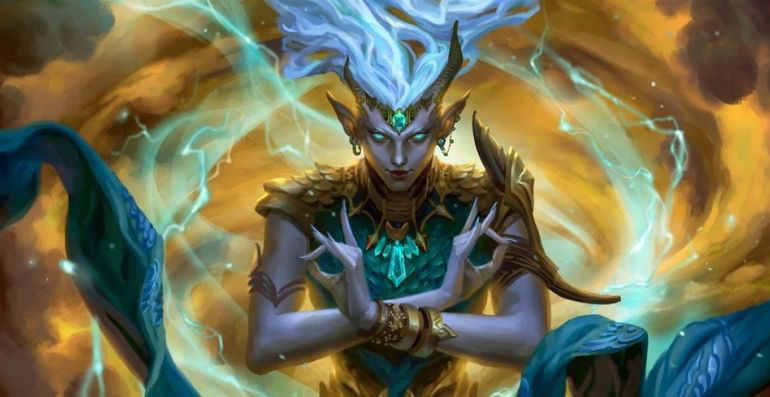
You didn't ask to be like this, but as you grew up you acquired different characteristics and soon your powers emerged. You are now a sorcerer.
Sorcerers have arcane bloodlines in their family coming from distant ancestors of enormous power, this remnant of magic awakened precisely in you gives abilities and changes your supposedly ordinary life forever.
Sorcerers in History
For obvious reasons, there are no real cases of sorcerers in real life.
However, many mythologies and folktales tell of people cursed by past relationships in their families that would give them superhuman abilities or even turn them into monsters occasionally, but nothing directly related to sorcerers like Dungeons & Dragons did.
Sorcerers in Fantasy
Harry Potter in his first book has an awakening similar to that of a sorcerer, with magic coming from a genetic inheritance and not from study as he would when arriving at Hogwarts.
In anime like Fairy Tail the characters acquire powers naturally and train them in different ways in a society where not everyone can acquire magic.
In games many scenarios present arcane power as something specific of a family or race, such as Terra in Final Fantasy VI.
Sorcerers in D&D
Sorcerers are the easiest way to enter the fully spellcasting classes in D&D, as they don't need to prepare their spells and still receive additional powers according to the chosen lineage.
On the other hand, they have fewer learned spells per level, which makes it easier to control, but reduces long-term diversity, which is balanced by the extra powers that a regular caster would not have.
As they evolve, the Sorcerer delves deeper into their bloodlines that can turn from various sources such as Dragons, Shadows and even Aberrants.
Ranger
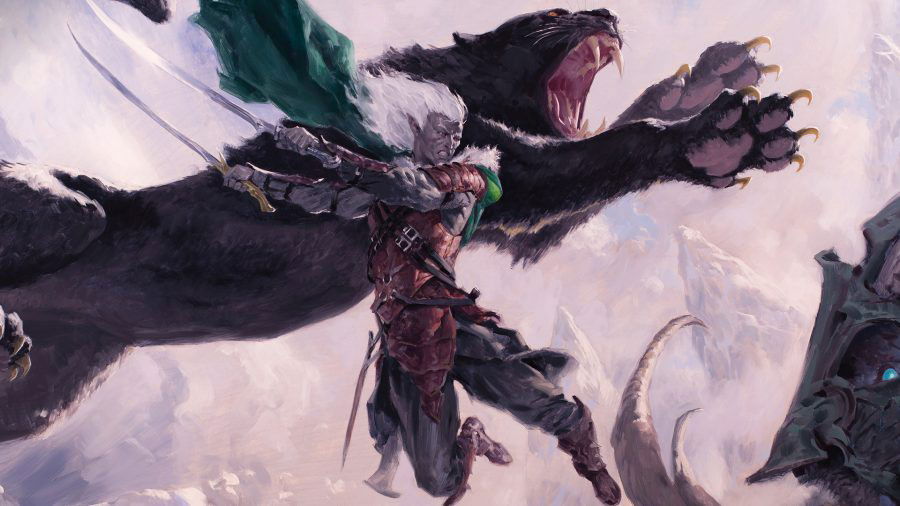
Rangers are experts in specific terrains and targets.
Rangers are a versatile ally and a deadly foe, capable of traversing the wilds with ease and hunting down their marked foes with technique and efficiency.
Rangers in History
There is no direct correlation between Rangers in D&D and actual historical figures. This combination of skills and magic was made from inspirations in the literature of the time.
But we can connect, in a way, Rangers to hunters and members of people who live in environments considered wild, who have learned to mix with nature and take advantage of the environment in their favor.
Rangers in Fantasy
The Rangers' biggest inspiration in Dungeons & Dragons was Aragorn from the Lord of the Rings series.
As the editions evolved, the Ranger gained new clothes and designs of its own transferred to other works such as the so-called Rangers from the "Ranger: Order of the Archers" book series to the Wall Watchers from Song of Fire and Ice*, which can be treated as rangers specializing in a single terrain and enemy.
Rangers in D&D
A mix of explorer, hunter, combatant and spellcaster, the Ranger seeks survival in every way, uniting their skills in a versatile and lethal.
A ranger can focus on anything they want, from an environment to a specific creature type, as well as close-range and long-range combat styles and even the use of smaller-scale spells and animal companions. It's up to the player to be good at a bit of everything or great at one of those paths.
As it evolves, the Ranger can decide an archetype that specializes in one of the multiple possible paths for the class, as the Hunter or the Horizon Walker.
Warrior
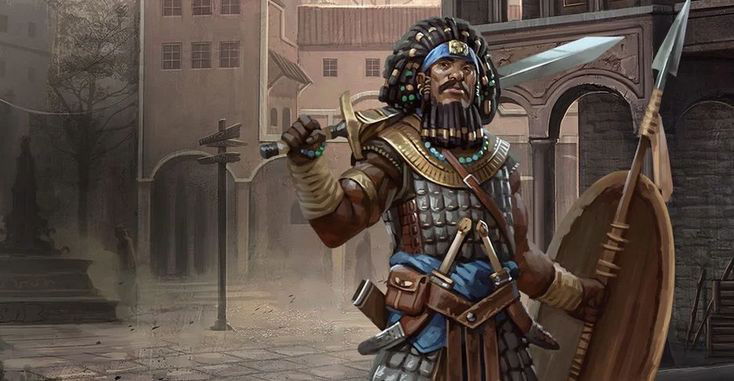
Trained in combat with the most varied weapons and equipment, Warriors are probably the most common of the existing classes in Dungeons & Dragons, as they encompass all adventurers who do not fall into the other categories.
A warrior is technically the simplest class for novices and one of the most versatile, able to stay diverse or specialize in the use of a specific weapon or maneuver.
Warriors in History
People who dedicate their lives to combat have existed since the dawn of humanity, with combat and war being one of the foundations of all human civilizations.
We have examples like the Roman legions, Nordic Vikings, Japanese Samurai and even the armies of current countries with their firearms would be considered warriors in D&D in an urbanized scenario.
Warriors in Fantasy
Most action heroes in fantasy movies are classic Warriors like Hercules and Xena from the series of the same name.
Cloud from Final Fantasy VII, Crono from Chrono Trigger and all combat related classes in MMORPGs are examples in games.
Warriors in D&D
Warriors are the main combatants in Dungeons & Dragons. With little focus on magic, they can make the most of diverse weapons and equipment.
They can focus on short or long distance, deal or take damage, and even between specific maneuvers or weapons for the most different purposes and desires of the player.
This versatility combined with simple rules makes the fighter one of the most balanced classes in the game, being used by novices and veterans alike.
As it evolves, a fighter can specialize in certain styles like the Champion, the Knight or the Arcane Archer, which mixes arrows with different spells.
Wizard
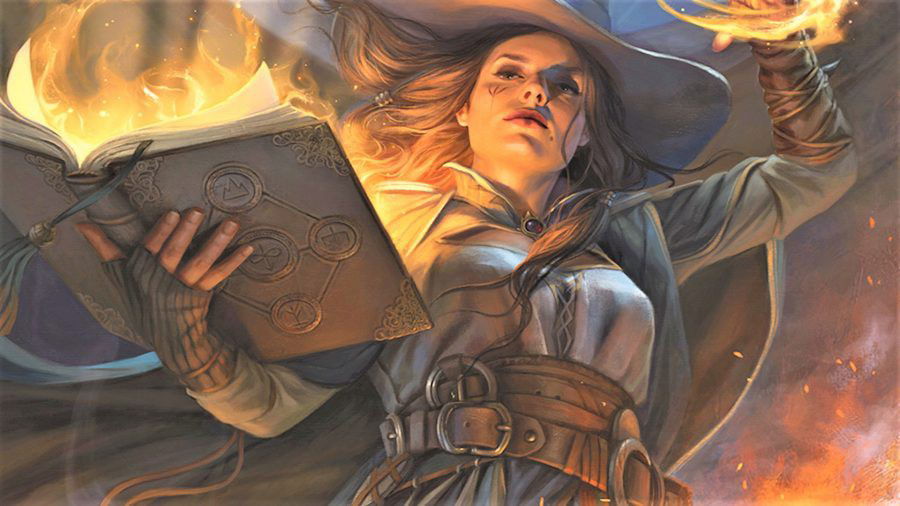
Scholars devoted to arcane rules, mages are the most famous users of magic, thanks to the great power and versatility they can acquire over time.
Wizards mix the different paths of magic with the constraints of having to memorize them daily, a balance that makes the Wizard powerful but also a complex position for any team.
Wizards in History
Magic supposedly doesn't exist, but it's been eagerly followed by cultures around the world since the emergence of first civilizations and even though today it is seen with skepticism, it was once a real fear and desire in society.
Until now, we have cults and different paths of magic with their books and rituals, each focused on certain ways of seeing the world similar to the schools of magic that the D&D wizard might specialize in.
Wizards in Fantasy
Wizard, along with warrior and rogue is part of the triad of base classes of any medieval fantasy, and we have several examples of them here.
Rincewind and all the mages in the Discworld series are perfect examples of D&D mages, including the fact that they need to memorize their spells daily, the so-called "Vancian Magic" used in Dungeons & Dragons.
Works like Harry Potter also show a wizard's path of study, and most fantasy RPGs feature arcane magic-using classes similar to Dungeons & Dragons.
D&D Wizards
Wizards have a huge catalog of spells available that they need to learn and, most importantly, memorize for individual uses.
This mix of quantity with restrictions makes the mage a complex but definitely powerful choice, especially when overcoming the lower, fragile levels of the class.
As they evolve, the Wizard can specialize in schools of magic, increasing their potential for certain paths like Illusion or Conjuration.
Monk
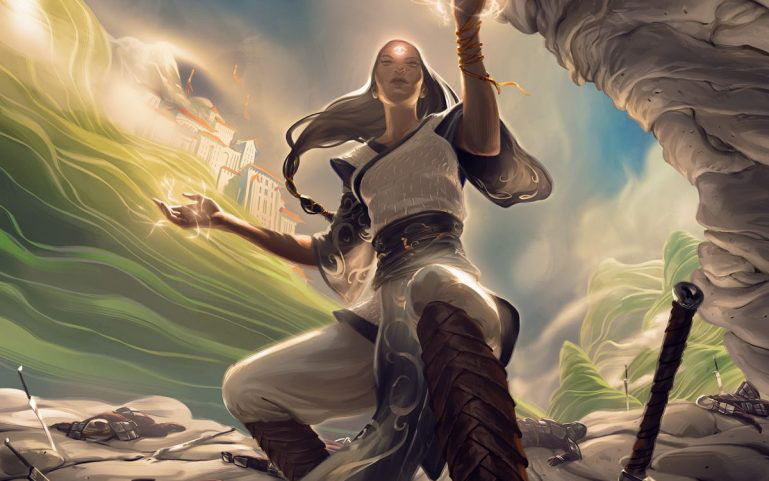
Masters of unarmed combat and the use of mysterious Chi in unique abilities!
The Monk is a class that focuses its strength on increasingly strong bursts of unarmed attacks, as well as techniques that mix martial arts with the consumption of Chi, an energy that only he possesses in the game.
Monks in History
The class is heavily inspired by the Fighting Monks, a segment of real Buddhist monks who dedicate their lives to training in unified martial arts and meditation, which exist to this day in isolated temples.
There are no reports of fighting monks in Medieval Europe where the D&D aesthetic is inspired, so many says this is a class that doesn't make sense as a base, but it undoubtedly takes a niche for unarmed fighters that others wouldn't normally be able to fill.
Monks in Fantasy
Aang from “Avatar: The Last Airbender” is literally a fighting monk, albeit also an Airbender, similar to one of the possible paths for the class.
Iron Fist and Shang-Chi, both from Marvel, present a whole Chi-based culture and martial arts in their comics and movies.
Monks in D&D
Monks don't use common weapons or armor, trading this limitation for several different effects with Chi and their combat techniques.
In this way, the monk is always prepared for combat, as the damage comes from his own fists and innate powers. Regardless of what situation you are in, you will be a potential risk to any opponent.
As he evolves, the Monk enters a specific monastic tradition that extends his knowledge and techniques such as the Drunk Style or even the Four Elements, giving him supernatural abilities with Chi.
Paladin
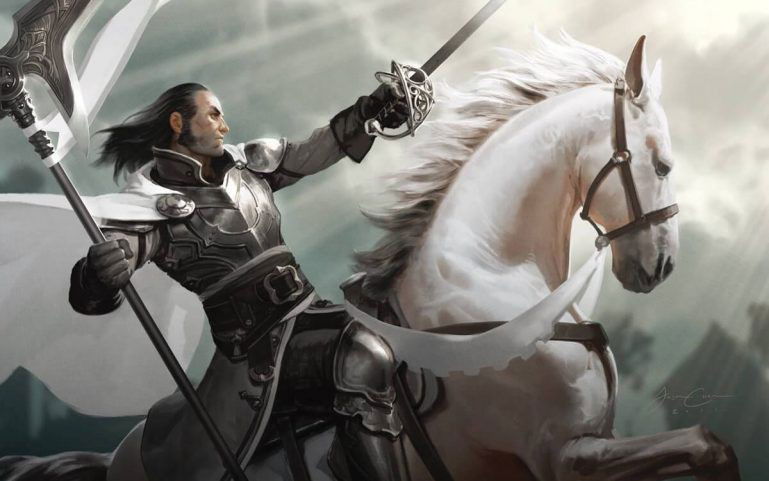
Divine knights with powers coming from entities or a strong oath, Paladins can be the perfect example of a hero or a terrible slayer wherever they go, but regardless of the form, they will always be remembered by those who witness their powers.
Paladins mix the use of heavy weapons and armor, mounts, and divine powers derived from a vow or code of honor.
Paladins in History
Paladin is a term coined from royal cavalry such as Augustus' Palatinate Guard, a Vatican military unit that would protect the pope himself, and others such as the Paladins of Roland from Emperor Charlemagne.
In this way, the Paladin is perhaps the class with the greatest connection to real history and brings the divine powers of their religious connection in addition to the military one.
Paladins in Fantasy
Paladins appear as units in historical strategy games like Age of empires and Civilization, usually expansions of other cavalry units.
It also appears with the same name in the game Diablo II and Final Fantasy as a playable class and with different titles, but identical concept of "Divine Knight against Darkness" in other works, each with its own characteristics in-universe, but centered around the Paladin archetype created by Dungeons & Dragons.
Paladins in D&D
Paladins mix the advantages of an armored combatant with good defenses and attack ability with the benefits of a divine spellcaster, as well as other additional abilities coming from the class itself.
However, this potential comes with the restrictions of your honor code, the vow you must follow which, if broken, earns you penance and even the temporary loss of abilities.
As it evolves, the Paladin can make swear oaths that give you extra powers and restrictions such as Devotion, Glory or Revenge.
Rogue
Masters of stealth, hidden talents, and even assassination, many treat the rogue as simple criminals when, in fact, they are essential adventurers for any group.
Rogues have their own set of techniques focused on breaking and entering, handling traps, climbing, stealing, and techniques that catch the target off guard that yes, can be used for the bad if they want to, but they also create vital explorers and adventurers for any group inside and out. of dungeons.
Rogues in History
There is no clear example of who inspired the Rogues in real history, most have come from tales like Robin Wood and other figures in fantasy literature of the time.
However, we can treat explorers of Egyptian dungeons and tombs as royal rogues who enter ancient structures full of traps searching for treasures, needing to mix cunning and skill to survive these journeys.
Rogues in Pop Culture
Perhaps the first great rogue is Robin Wood, the famous thief who stole from the rich to give to the poor. We also have figures like Bilbo Baggins from The Hobbit, who officially traveled as the group's thief not to commit crimes, but to use stealth in missions that called for them.
In other games we have a series of classes such as thieves, assassins and even the rogues themselves in several classic and current RPGs, hardly an MMORPG is released without an archetype of the type. Clear examples are the Final Fantasy series, Elder Scrolls, World of Warcraft, etc.
Rogues, along with fighters and mages, are the easiest classes to find in pop culture in every way possible, they form the triad of medieval fantasy core classes.
D&D Rogues
In D&D, Rogues mix a large list of thieving skills and tricks that give them an advantage in situations where other classes would be helpless, with the ability to deal a lot of damage at the right time with their Sneak Attacks.
Playing as a Rogue will ask for cleverness, not only from the character, but also from its player, as they are a class full of abilities, but fragile if confronted directly.
As he evolves, the Rogue can specialize his talents in paths such as the assassin, the thief, or even the arcane trickster, where they imbue his cantrips with magic.
What is the strongest class in D&D?
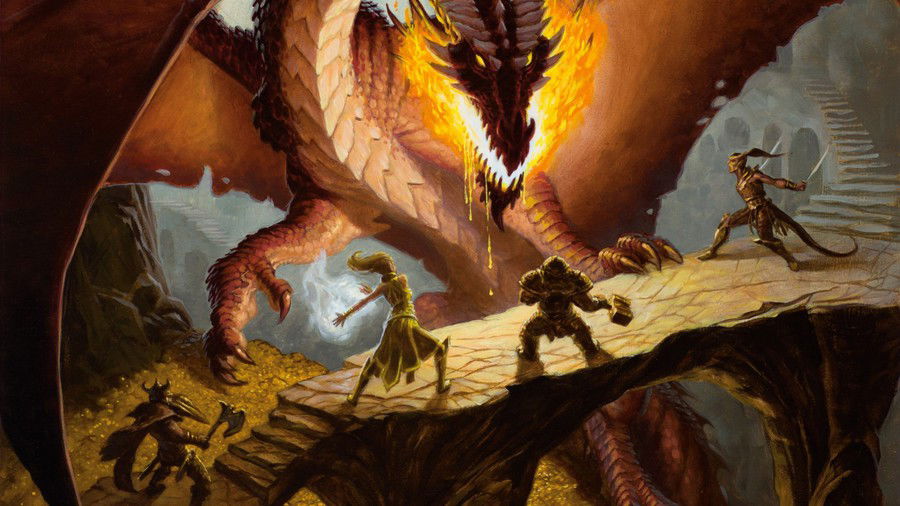
Technically, there is no stronger class in D&D, although many players say there is.
If you search, you will find very well-founded lists ranking the Dungeons & Dragons classes, and this can be an interesting search to learn more about the system!
However, since Dungeons & Dragons is a game focused on creativity and with stories created by a narrator for a specific group, it is acceptable to imagine that regardless of the efficiency of another class or the way it will be used, the table will "balance" naturally.
So don't worry so much about combos and power levels, this should be fun, not a blind pursuit of efficiency.
Which class to choose?
There is no exact answer, as each class occupies a different niche and mechanic.
Generally speaking, after reading this list, you probably got excited about some class or reference and are considering using it. But maybe you're afraid she won't fit in with the choices of the rest of the group.
And that's a valid thought, but not an obligation.
If you can and want to choose a class that fits well with the rest of the table, your challenges will definitely be milder. But a table of all spellcasters or without any access to spells can create a challenging and fun environment!
Try to keep your balance, but remember that in the end, it's your fun that will speak the loudest.
And you, what's your favorite class?
That was a very long article, but I hope it helped you out!
After this list, do you already have a favorite class in Dungeons & Dragons?
Let us know and comment what kind of character you like to play the most at the D&D tables, your opinion matters! Who knows, maybe we'll make a special post about them in the future?
Happy gaming and good dices to you all!

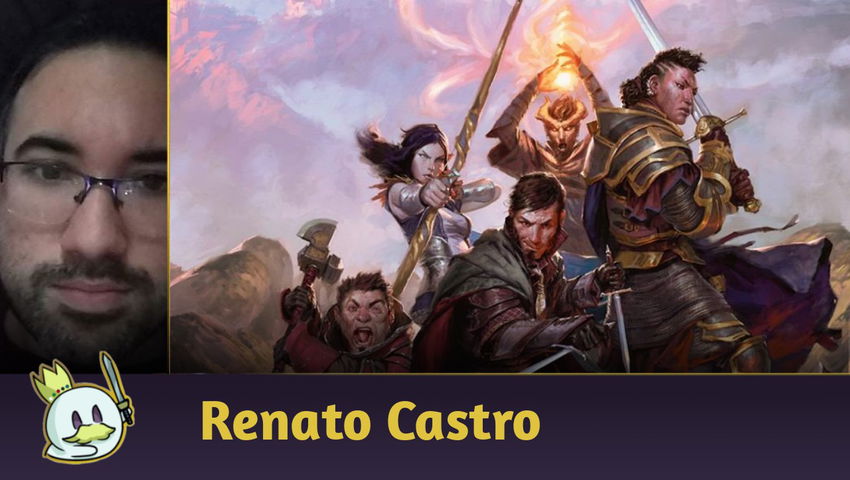







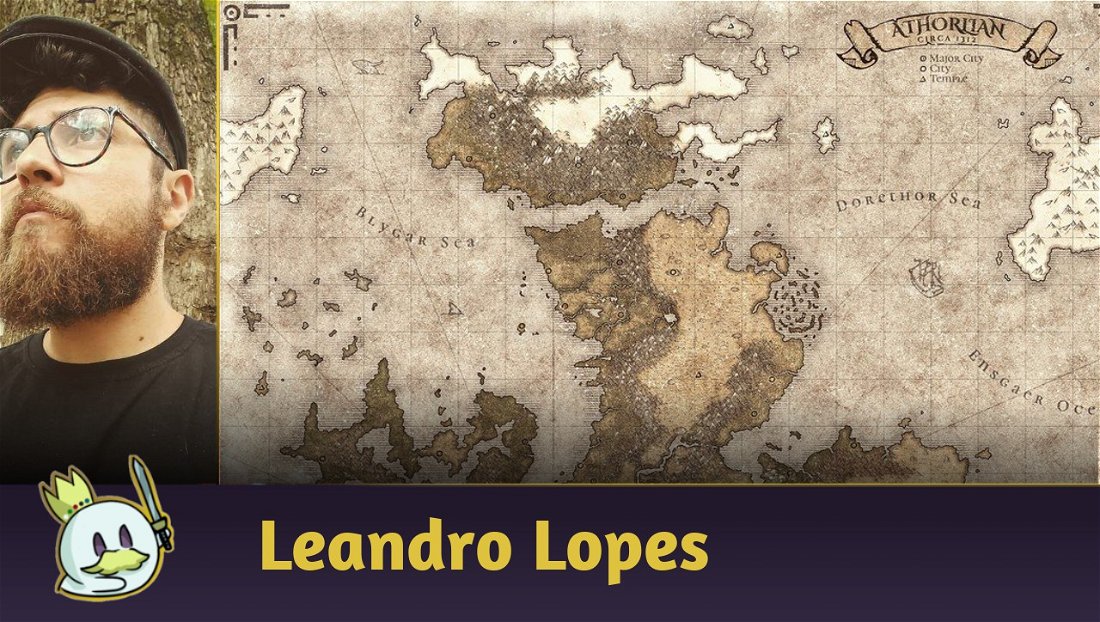
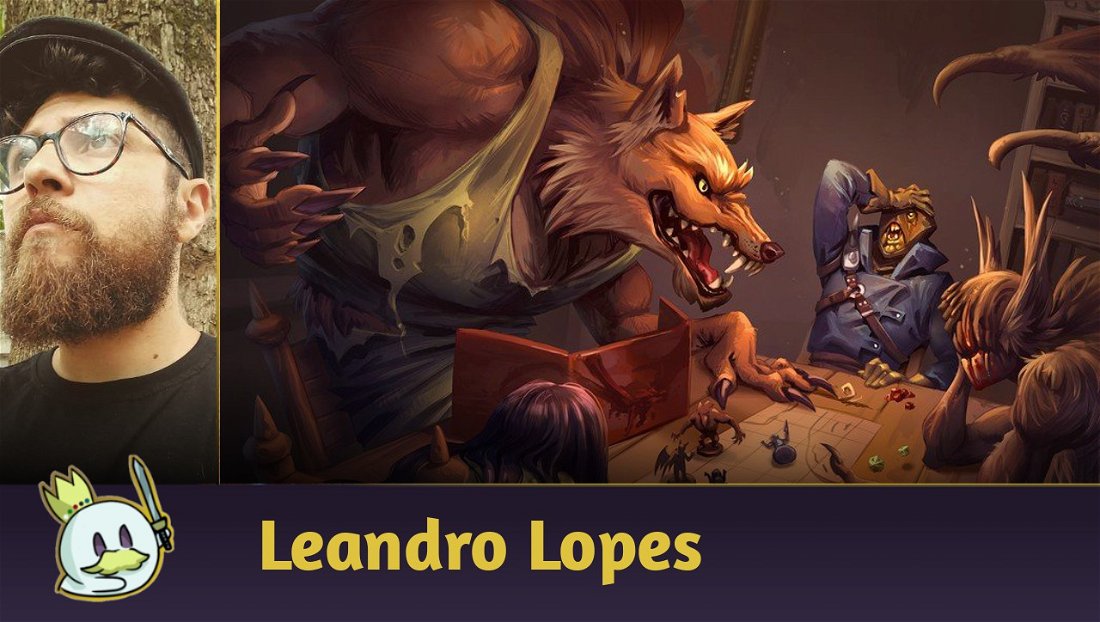



— commentaires 0
, Réactions 1
Soyez le premier à commenter